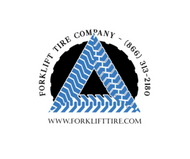23rd Mar 2025
Lifting loads is one of the most fundamental aspects of forklift operation. However, if not done correctly, it can result in serious accidents, including damage to overhead fixtures, forklift tip-overs, and falling loads that may injure pedestrians below.
To ensure workplace safety and protect both operators and bystanders, it is crucial to follow best practices when lifting loads with a forklift. In this article, we highlight three critical areas to focus on when lifting loads safely.
1. Ensure Adequate Overhead Clearance
Before lifting any load, always check for sufficient overhead clearance. You should conduct this assessment as part of your pre-operation inspection, especially if you are working in a new environment.
Why Overhead Clearance Matters:
- Prevents damage to warehouse fixtures such as sprinkler systems, lights, and ceiling panels.
- Protects forklift components, including the load backrest, from impact damage.
- Ensures a smooth lifting process without unexpected obstructions that could cause instability.
Best Practices:
- Perform a thorough visual inspection of the work area before operating a forklift.
- Be aware of any overhead obstructions and adjust your lifting strategy accordingly.
- If working in low-clearance areas, use forklifts designed for confined spaces.
2. Keep the Forklift Stationary While Lifting
A forklift should always remain stationary while lifting a load. When a forklift moves while lifting, its center of gravity shifts, reducing stability and increasing the risk of a tip-over accident.
Dangers of Lifting While Moving:
- A moving forklift with an elevated load becomes highly unstable.
- Sudden braking or turning with a raised load can cause forklift tip-overs.
- Pedestrians and nearby workers are at greater risk if an unstable load falls.
Best Practices:
- Engage the forklift's parking brake before lifting the load.
- Ensure the forklift remains stationary until the load is properly secured.
- Avoid any sudden movements that could disrupt stability.
3. Ensure the Load is Properly Balanced
Proper load balancing is crucial for forklift stability and safety. An unbalanced load increases the risk of tipping, while a poorly placed load may shift unexpectedly, endangering both the operator and nearby workers.
Steps to Properly Balance a Load:
- Distribute weight evenly across the forks. Ensure that the forks cover as much area beneath the load as possible.
- Adjust the forks to position the load centrally, preventing excessive weight on one side.
- Place heavier items closer to the load backrest to enhance stability.
- Tilt the forklift mast slightly backward before raising the load to improve security.
Why Load Balance is Important:
- Prevents forklift tip-overs due to uneven weight distribution.
- Reduces the risk of load shifts, which could cause damage or injuries.
- Ensures smooth handling and transport of goods.
Article Summary
- Check for adequate overhead clearance before lifting to avoid damaging warehouse fixtures or the forklift.
- Keep the forklift stationary when raising a load to prevent tip-overs and maintain stability.
- Properly balance the load by evenly distributing weight, keeping heavier items near the load backrest, and slightly tilting the mast backward for additional stability.
By following these safety practices, forklift operators can reduce risks, prevent accidents, and maintain efficiency in material handling operations.
At Forklift Tire Company, we specialize in high-quality forklift tires that enhance traction and stability. Visit our online store for the best deals or contact us at sales@forklifttire.com for expert assistance in selecting the right forklift tires for your needs.






